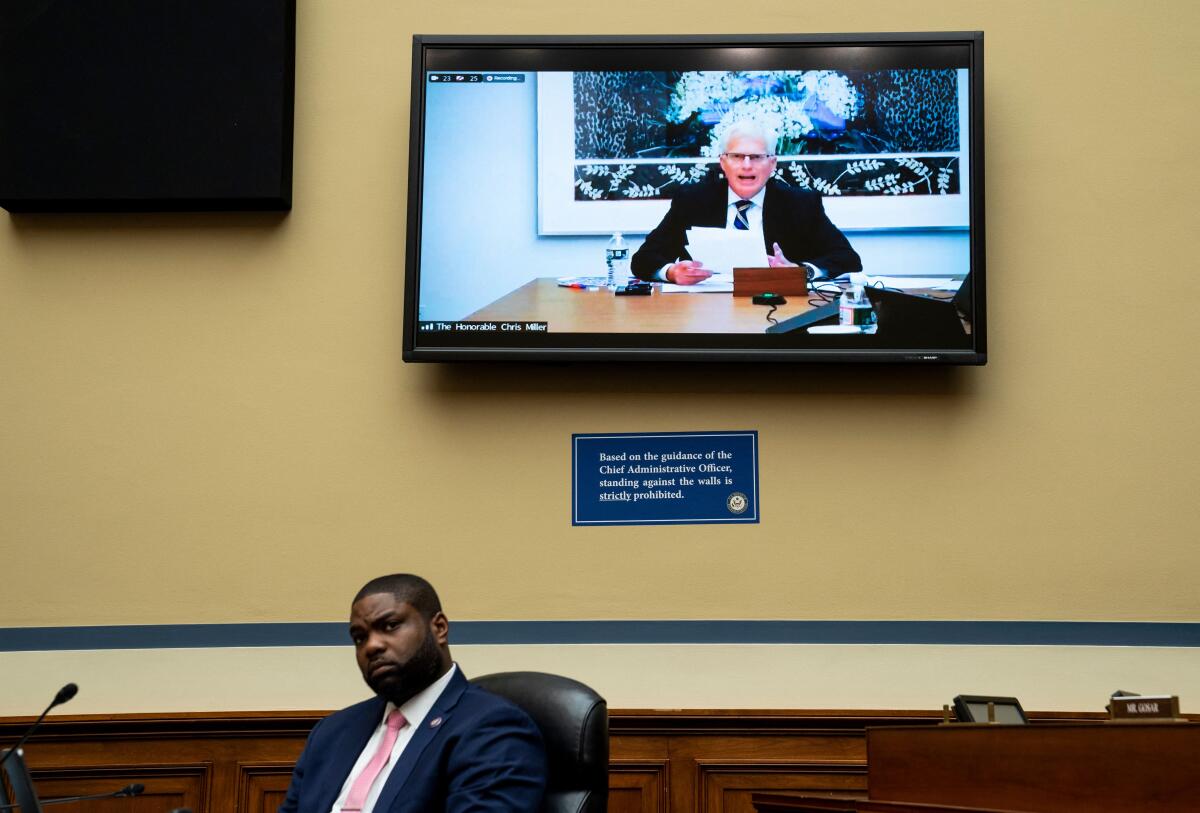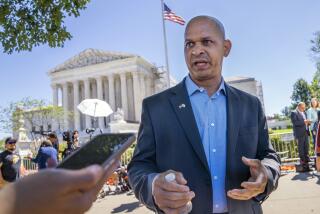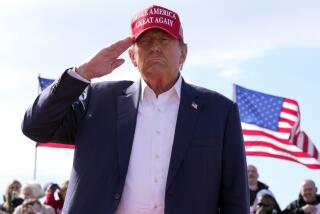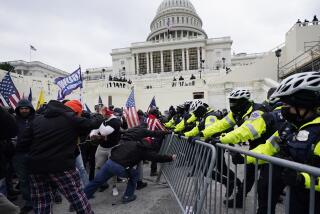‘I stand by every decision’: Former Trump officials grilled over Jan. 6 response

WASHINGTON — Two former Trump administration officials faced tough questions about their roles in the sharply criticized response to the Jan. 6 Capitol insurrection during a congressional hearing that highlighted how much remains unknown about the events that day.
Wednesday’s hearing was the latest in Congress’ attempts to grapple with the Jan. 6 riots that sent then-Vice President Mike Pence and hundreds of lawmakers into safe rooms as a pro-President Trump mob smashed windows, destroyed art and furniture, beat police officers and ransacked the Senate chamber in an attempt to stop the constitutionally mandated counting of the electoral college votes to certify Joe Biden as the winner of the 2020 presidential election. Congress is still weighing whether to create a bipartisan commission to investigate the events surrounding the insurrection.
Former acting Defense Secretary Christopher Miller and former Deputy Atty. Gen. Jeffrey Rosen defended their actions during the five-hour hearing. It is the first time Miller and Rosen have spoken publicly about their planning and response to the Jan. 6 attack.
“I stand by every decision I made on Jan. 6 and in the following days,” Miller said.
But House Oversight and Reform Committee Chairwoman Rep. Carolyn Maloney (D-N.Y.) slammed law enforcement’s response to the uprising.
“The federal government was unprepared for this insurrection, even though it was planned in plain sight on social media for the world to see. And despite all the military and law enforcement resources our government can call upon in a crisis, security collapsed in the face of the mob, and reinforcements were delayed for hours as the Capitol was overrun,” Maloney said.
Miller defended his decisions around that day, saying he was concerned about the optics of sending uniformed troops to the Capitol amid the “irresponsible commentary in the media” and “hysteria” that military leaders were bracing for the chance Trump might order them to intervene.
“If I would have put military forces on Capitol Hill before the events of Jan. 6, I feel very confident that would [have] reinforced the narrative by many that [they] were going to try to weigh in and overturn the election, and I wasn’t going to have that happen,” Miller said.
He also pushed back against criticism from some in Congress that it took more than four hours after the first rioters entered the building for federal troops to arrive and begin regaining control.
“I fervently believe the military should not be utilized in such scenarios, other than as a last resort, and only when all other assets have been expended,” Miller said.
Rosen testified that the Justice Department “prepared appropriately” ahead of the riot, including having tactical and special units on standby in the area in case they were needed.
“The Department of Justice acted with the utmost integrity and urgency to support our institutions of government to the very best of our abilities when the legislative branch came under attack,” Rosen told the committee in his opening statement.
Both Rosen and Miller told lawmakers they did not speak with Trump the day of the attack.
“I had all the authority I needed and knew what had to happen,” Miller said. Miller also stressed that Trump did not delay or play a role in the decision to deploy troops Jan. 6. Some initial reporting said that he had dragged his feet in approving their deployment.
Unlike in states and territories, in Washington, D.C., the president, not local authorities, decides whether to deploy the local National Guard. Miller said Trump told him days before the riot to provide whatever troops city leaders requested, and to “Do whatever is necessary to protect the demonstrators, executing their constitutionally protected rights.”
“I think the lack of direct communication from President Trump speaks volumes,” Maloney said.
Miller said he did speak with Pence hours into the insurrection, but that the conversation did not play a role in his decision to deploy the District of Columbia National Guard because the vice president is not in the chain of command.
The former officials were joined by D.C. Metropolitan Police Chief Robert Contee, who has criticized what he has described as the military’s lackadaisical response to the riots. Contee said intelligence agencies warned of the threat of violence through an email to various police agencies the day before the attack, without follow-up to ensure it reached the correct people.
“I think that a situation like this certainly warrants more than an email being sent out,” he said. The process has been changed since to include a phone call, Contee said.
Maloney said the Justice Department and FBI have not produced any documents requested by congressional committees to help understand planning and reasoning around Jan. 6.
“We’re still in the dark about what exactly went wrong,” Maloney said.
That many details are unresolved was clear Wednesday as members of the House committee continued to disagree on the basic facts of what occurred Jan. 6. Democrats argued with witnesses about the timeline of when additional help was requested. Witnesses disagreed with one another, and with the timeline released by the Department of Defense, on who made the request for federal assistance and when. Some Republican members focused on whether the event met the dictionary definition of insurrection.
Arizona Republican Rep. Paul Gosar claimed that no firearms were confiscated, although firearms were confiscated from protesters on Capitol grounds, according to court records. Gosar also argued that the death of Capitol Police Officer Brian Sicknick wasn’t caused by rioters. Sicknick, who was attacked by chemical spray, died of a stroke one day after the insurrection.
And Gosar took issue with an officer’s killing of rioter Ashli Babbitt, who was shot by a Capitol Police Officer as she attempted to enter the House chamber while lawmakers were still evacuating. The DOJ announced last month it would not charge the officer for her death.
Gosar criticized the government’s efforts to track down those who entered the Capitol, saying law enforcement “enlisted Americans to turn in their own neighbors,” adding, “The DOJ is harassing peaceful protesters across the country.”
The FBI has released photos of suspects it is pursuing who allegedly participated in the violent attack.
Maloney said FBI Director Christopher Wray was sent multiple invitations to appear before the committee with Miller and Rosen, and she rescheduled the hearing twice in an attempt to accommodate his schedule. Wray has agreed to appear before the committee in June, Maloney said.
Congress is considering creating a bipartisan commission to study the causes and circumstances around the Jan. 6 attack, similar to the commission created after 9/11, but has reached an impasse with Republican leaders who insist the scope of the investigation also include unrelated violence during the Black Lives Matter protests over the summer. Democrats are hoping for an agreement soon, so the commission can be included in a bill approving $2 billion in new Capitol security spending that could be voted on in the House as soon as next week.
Meanwhile, the Senate Appropriations Committee heard from Atty. Gen. Merrick Garland and Homeland Security Secretary Alejandro N. Mayorkas about the Biden administration’s efforts to crack down on violent domestic extremism. The FBI has reported a spike in activity by anti-government groups and white supremacists, and Wray has testified that suspects espousing such views played major roles in the Jan. 6 riot.
Sen. Patrick J. Leahy (D-Vt.) asked Mayorkas to make public an internal review he launched to assess the dangers of domestic extremism in his own agency, saying the need for such a probe “sends chills down my spine.”
Lawmakers were keen to learn more about the status of the Justice Department’s investigation into the Jan. 6 riot. Garland said the Justice Department is still in the early stages of its investigation into the riot and declined to say when it might be completed.
The Justice Department has brought more than 400 cases against suspected Capitol rioters on charges including disorderly conduct, assaulting a police officer and conspiracy.
Sen. Richard C. Shelby (R-Ala.) asked Garland why the Justice Department seemed to be more zealously pursuing Capitol rioters than those who vandalized property and “terrorized cities like Portland [Ore.], Minneapolis and Washington, D.C.” amid racial justice protests last year. The senator was echoing criticism by fellow Republicans that the Justice Department seems to be ignoring vandalism and acts of violence and destruction of federal property by followers of the leftist antifa movement.
Garland said the Justice Department took such crimes seriously but was focusing on the Capitol attack because the riot was the “more dangerous threat to democracy” he had seen in his long career as a prosecutor and federal judge. “This was an attempt to interfere … with a fundamental element of our democracy,” Garland said.
“And if there has to be a hierarchy of things we prioritize, this would be the one we prioritize,” Garland said.
Garland also noted that the Trump administration was overseeing federal investigations and prosecutions during the unrest of last summer. He told Sen. Susan Collins (R-Maine) that federal prosecutors and agents in such places as Portland and Minneapolis were pursuing potential cases against those who engaged in violence or destroyed property.
“I have not heard any suggestion” that such investigations were suffering from “insufficient resources,” Garland said.
More to Read
Get the L.A. Times Politics newsletter
Deeply reported insights into legislation, politics and policy from Sacramento, Washington and beyond. In your inbox three times per week.
You may occasionally receive promotional content from the Los Angeles Times.












